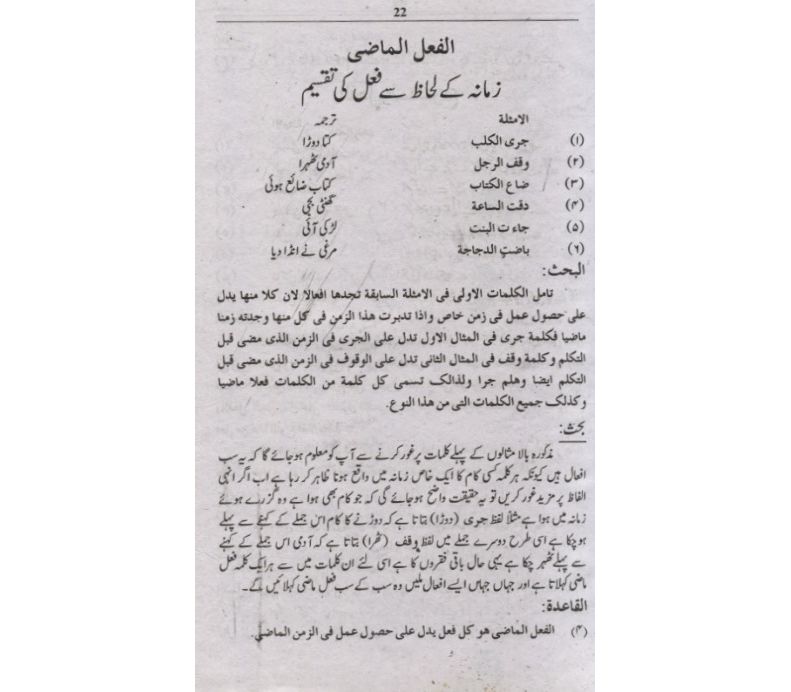An Nahw Al Wadih Pdf Editor
1 With the Name of Allah, Most Merciful, Ever Merciful. AL-NAHW AL-WADIH (THE CLEAR ARABIC GRAMMAR) by Ali al-jarim & Mustafa Amin Translation of the Examples and Grammatical Rules by Usama Hasan for the Arabic grammar course at Al-Tawhid College, London ( Al-Nahw al-wadih (The Clear Arabic Grammar), Primary Level, Part One, Page 1 of 11 2 PRIMARY LEVEL PART ONE LESSON 1: AL-JUMLAH AL-MUFIDAH (THE COMPLETE SENTENCE) 1. The garden is beautiful. The sun is rising. Ali smelt a rose. Muhammad picked a flower. The fish lives in the water.
With the Name of Allah, Most Merciful, Ever Merciful. AL-NAHW AL-WADIH (THE CLEAR ARABIC GRAMMAR) by ‘Ali al-Jarim & Mustafa Amin Translation of the Examples and Grammatical Rules.
Date-palms are plentiful in Egypt. RULE 1: The composition that gives a complete meaning is called a jumlah mufidah (complete sentence); it is also called kalam (speech). RULE 2: The complete sentence is composed of two or more words; every word is counted as part of it (the sentence). Ibrahim rode the horse. Isma il teases the cat. The farmer reaps the wheat. The sheep eats beans and barley.
I heard the advice. The light shines in the room. The ship sails on the water. Do you like travelling? LESSON 2: PARTS OF THE SENTENCE RULE 3: Words are of three types: ism (noun/adjective), fi l (verb) and harf (particle). A) The ism is every word by which a person, animal, plant, inanimate object or anything else is named. B) The fi l is every word that signifies the occurrence of an action at a particular time.

C) The harf is every word whose meaning is not completely clear without other (accompanying) words. Al-Nahw al-wadih (The Clear Arabic Grammar), Primary Level, Part One, Page 2 of 11 3 LESSON 3: CLASSIFICATION OF THE VERB WITH REGARD TO ITS TIME- PERIOD 3.1 THE FI L MADI (PAST TENSE) 1. The man stopped. The book became lost (went missing). The clock chimed. The girl came.
The hen laid [(an) egg(s)]. RULE 4: The fi l madi (past tense) is every verb that signifies the occurrence of an action in the past. I wash my (two) hands. I wear my clothes. We play with the ball. We walk in the fields.
The dog barks. The guard becomes alert.
The girl eats. The rose withers. 3.2 THE FI L MUDARI (PRESENT TENSE) RULE 5: The fi l mudari (present tense) is every verb that signifies the occurrence of an action in the present or future.
It comes with complete Digital Professional Encoder, and plug-in collections. Download keygen sony vegas 13. Its characteristics include highly sophisticated archival tools, difficult audio metering, and it Connects mobile iPad person app.
It must begin with one of the letters of the mudari: hamzah, nun, ya or ta. 3.3 THE FI L AMR (IMPERATIVE TENSE) 1. Play with the ball.
Feed your cat. Clean your clothes. Take it easy when travelling.
Students and educators are eligible for an individual educational license if they are enrolled or employed at a Qualified Educational Institution which has been accredited by an authorized governmental agency and has the primary purpose of teaching its enrolled students.. Free Autodesk software and/or cloud-based services are subject to acceptance of and compliance with the or other applicable terms that accompany such software or cloud-based services. Software and cloud-based services subject to an Educational license may be used solely for and shall not be used for commercial, professional or any other for-profit purposes. Autocad electrical 2014 system requirements.
Chew food well. RULE 6: The fi l amr (imperative tense) is every verb by which the occurrence of something in the future is requested (or commanded). Al-Nahw al-wadih (The Clear Arabic Grammar), Primary Level, Part One, Page 3 of 11 4 LESSON 4: THE FA IL (SUBJECT OF A VERB) 1. The sparrow flew. The horse ran.
The boy played. The fish swims. The mosquito bites. The girl eats. RULE 7: The fa il (subject of a verb) is an ism marfu (noun in the nominative case) preceded by a fi l (verb), and signifies whoever did the action.
LESSON 5: THE MAF UL BIHI (OBJECT OF A VERB) 1. The student tied the rope. The girl folded the garment. The wolf ate the lamb. The winner earned a prize. The fox hunts the chicken.
The butcher sells the meat. RULE 8: The maf ul bihi (object of a verb) is an ism mansub (noun in the accusative case) to which the action of the fa il (subject of the verb) applies. LESSON 6: COMPARISON OF THE FA IL AND MAF UL BIHI 1. The horse pulls the cart.
The slave picked the flower. Fatimah tied the goat. The farmer waters the crops. The player threw the ball. The policeman detained the burglar.
CONCLUSIONS 1. The fa il and maf ul bihi are both nouns (ism). The fa il is the one who/which does the action (fi l). The maf ul bihi is the one to whom/which the action is done. The fa il ends in the marfu (nominative) case. The maf ul bihi ends in the mansub (accusative) case. Al-Nahw al-wadih (The Clear Arabic Grammar), Primary Level, Part One, Page 4 of 11 5 LESSON 7: THE MUBTADA AND KHABAR (SUBJECT AND PREDICATE OF A SENTENCE) 1.